Equipment breakdowns are a costly headache for any business. Seized parts and corrosion can bring operations to a grinding halt, impacting your bottom line.
That’s where anti-seize lubricants come in. Think of them as a protective shield for your machinery, preventing frustrating and expensive problems.
We’ll break down the different types of compounds available and show you how to apply them correctly.
What Are Anti-Seize Lubricants?
Anti-seize lubricants are specialized compounds formulated to prevent metal-on-metal seizing, galling, and corrosion – particularly in high-temperature or harsh environments. They create a protective barrier between surfaces, facilitating easier assembly and disassembly of threaded fasteners and other mechanical components.
Imagine trying to loosen a bolt that’s been exposed to high heat and corrosive elements for years. It’s a frustrating, time-consuming, and often damaging process. That’s precisely what anti-seize lubricants are designed to prevent.
Where to Apply Anti-Seize Compounds
Anti-seize compounds are used as a safeguard for the vital joints of your machinery. They can be applied to any metal-on-metal contact point where friction, heat, or corrosion threaten to cause problems. Such areas include:
- Threaded Fasteners: Bolts, nuts, and studs, especially those exposed to high temperatures or corrosive environments (e.g., exhaust systems, outdoor equipment).
- Fittings and Flanges: Connections in piping systems and other fluid transfer applications, where leaks and seizing are common.
- Bearing Housings and Press-Fit Assemblies: Components that require precise fit and easy disassembly for maintenance.
- Any Connection Scheduled for Future Disassembly: Anywhere with the potential to be taken apart in the future.
Common Anti-Seize Lubricant Formulations
Anti-seize is available in various forms to match different application needs. We will also discuss different types of anti-seize lubricants later in this guide.
- Anti-Seize Grease: The workhorse of anti-seize, providing excellent adhesion and long-lasting protection. Ideal for general applications.
- Anti-Seize Spray: Perfect for reaching tight spaces or applying a thin, even coating. Useful for intricate assemblies.
- Anti-Seize Paste: A thicker, more robust option for high-pressure and extreme-load scenarios, offering maximum protection.
Anti-Seize Lubricants and MRO
Anti-seize is an indispensable tool within the daily grind of maintenance, repair, and operations (MRO). Anti-Seize Lubricants can help your business in the following ways:
- Preventing Seized Fasteners: Ensuring that bolts and nuts can be easily removed during routine maintenance or repairs.
- Easing Disassembly: Simplifying the removal of parts that have been exposed to heat or corrosion, reducing downtime.
- Combating Galvanic Corrosion: Protecting against the destructive effects of dissimilar metals coming into contact.
- Extending Component Lifespan: Protecting expensive equipment from premature wear and tear.


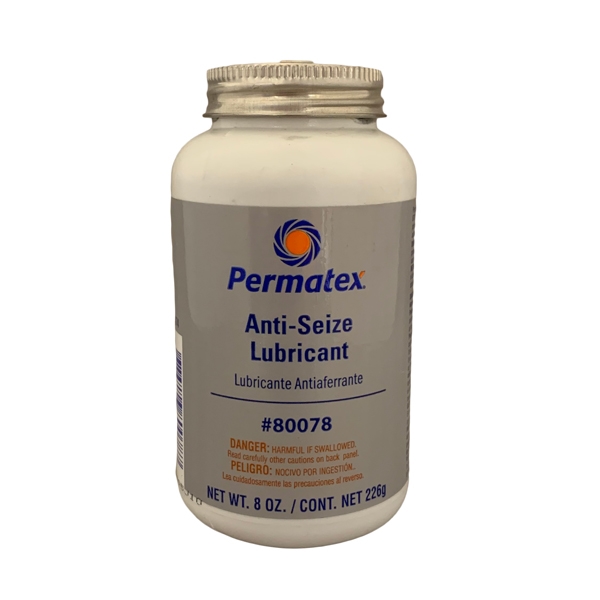
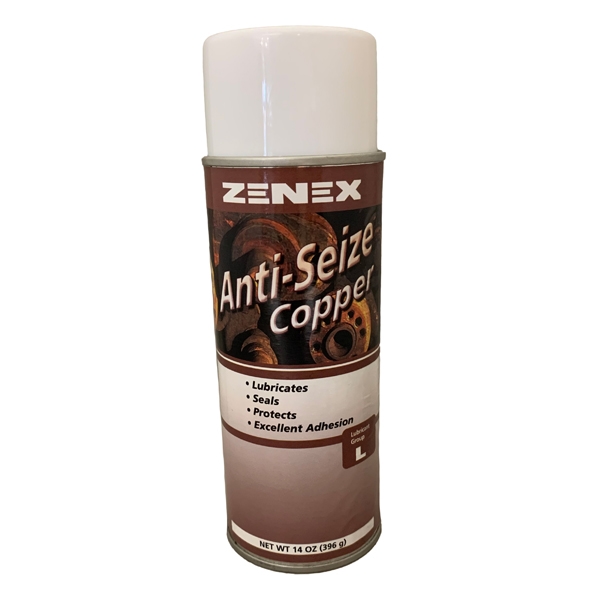
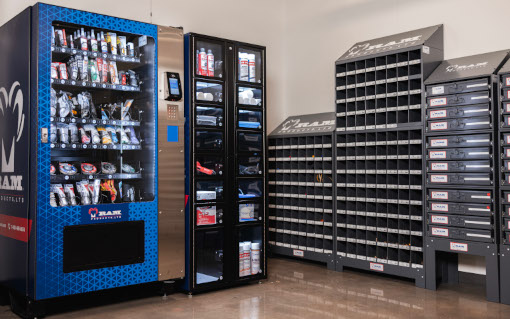
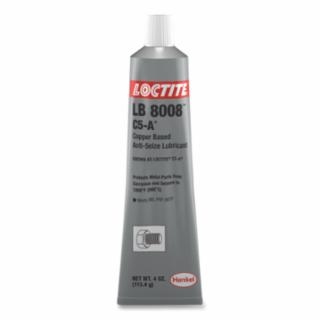
Types of Anti-Seize Compounds
Choosing the right anti-seize compound can be overwhelming, but it’s crucial for optimal equipment protection. Different applications demand specific formulations, and understanding these differences will ensure you’re using the right tool for the job.
Copper Anti-Seize Compounds
Copper-based anti-seize lubricants are a common choice, formulated with fine metallic copper particles suspended in a grease carrier.
Their primary benefits include excellent high-temperature resistance and good electrical conductivity. They’re effective in preventing seizing and galling in a wide range of applications.
However, copper can react with certain metals – like aluminum – leading to galvanic corrosion in wet environments. Therefore, you should not use copper anti-seize when dissimilar metals are present in wet or corrosive environments.
Copper anti-seize is great for exhaust manifold bolts and spark plug threads. Compared to nickel, copper is generally less effective in extreme corrosive environments.
Nickel Anti-Seize Compounds
Nickel-based anti-seize lubricants are formulated with nickel particles, offering superior resistance to high temperatures, extreme pressure, and corrosive environments. They excel in harsh conditions where other compounds might fail.
While more expensive than copper, nickel’s durability makes it a worthwhile investment for critical applications.
However, nickel-based products are generally not electrically conductive, so avoid them where electrical conductivity is required.
Nickel anti-seize is perfect for turbine bolts and chemical processing equipment.
Aluminum Anti-Seize Compounds
Aluminum-based anti-seize lubricants use aluminum particles as the primary solid lubricant. They provide good general-purpose anti-seize protection and are particularly useful in environments where copper or nickel contamination is a concern.
They offer good resistance to high temperatures and are suitable for many industrial applications.
However, they may not offer the same level of extreme pressure or corrosion resistance as nickel-based products. Avoid using aluminum anti-seize in extremely high-load or highly corrosive environments.
Aluminum anti-seize is great for general purpose threaded fasteners and fittings.
Zinc Anti-Seize Compounds
Zinc-based anti-seize lubricants offer excellent protection against corrosion, particularly in marine and outdoor applications.
Zinc acts as a sacrificial anode, protecting the underlying metal from rust and corrosion. They provide good general-purpose anti-seize protection.
However, they may not be suitable for extremely high-temperature applications. Do not use zinc anti-seize in extreme-temperature applications.
Graphite Anti-Seize Compounds
Graphite-based anti-seize lubricants use graphite as the solid lubricant, providing excellent high-temperature resistance and dry lubrication.
They are effective in applications where traditional greases might break down.
However, they can be messy and may not provide the same level of corrosion protection as other compounds. Avoid using graphite anti-seize in applications where cleanliness is critical or where corrosion protection is a primary concern.
Blended Anti-Seize Compounds
Blended anti-seize lubricants combine multiple solid lubricants – such as copper, nickel, and graphite – to provide a balanced range of properties.
These formulations aim to offer the benefits of each individual component, such as high-temperature resistance, corrosion protection, and extreme pressure performance.
However, they may not excel in any single category as much as dedicated single-component compounds. Do not use blended anti-seize if a very specific need is required.
How to Apply Anti-Seize Properly (Step-by-Step)
Proper application of anti-seize lubricants is a small investment that yields significant returns in equipment longevity and reduced maintenance costs. By following the correct procedures, your maintenance technicians can ensure optimal protection against seizing and corrosion.
Let’s walk through a step-by-step process that applies to most anti-seize lubricant products. For the most accurate application instructions, be sure to reference your specific anti-seize lubricant product.
Step 1: Clean the Surfaces
Begin by thoroughly cleaning surfaces where the anti-seize will be applied. Remove any existing dirt, rust, grease, or old anti-seize. A clean surface ensures proper adhesion and optimal performance. Use a wire brush or solvent as needed.
Step 2: Wear Protective Gear
Always wear gloves to protect your skin from contact with the anti-seize compound. Some formulations can be irritating. Eye protection is also recommended.
Step 3: Apply a Thin, Even Layer
Use a brush, swab, or spray applicator to apply a thin, even layer of anti-seize to the threads or contact surfaces. Avoid over-application, as excess anti-seize can attract dirt and debris or affect torque readings.
Step 4: Coat All Contact Points
Ensure that all threaded surfaces, including the roots and crests of the threads, are coated. For flat surfaces, apply a thin layer to the entire contact area.
Step 5: Assemble Components
Assemble the components as required. The anti-seize will create a protective barrier, preventing metal-to-metal contact and seizing.
Step 6: Torque to Specifications
When tightening fasteners, torque them to the manufacturer’s specifications. Do not over-torque. The lubricating properties of anti-seize can reduce friction, potentially leading to over-tightening and damage. If you over-torque, you can damage the bolt or the equipment that is being bolted together.
If you have any further questions about anti-seize application or need assistance selecting the right compound for your needs, don’t hesitate to reach out to the Ram Products support team. We’re here to help you keep your operations running smoothly.
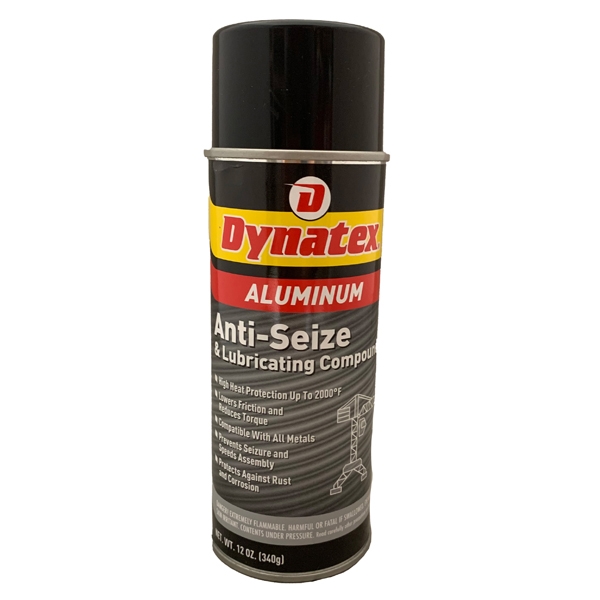
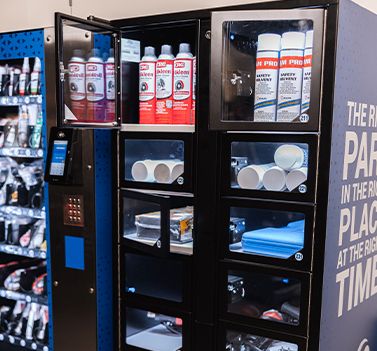

Benefits in Maintenance Operations
While the immediate benefits of anti-seize lubricants are clear – preventing seized fasteners and easing disassembly – their impact extends far beyond individual components. In the realm of MRO, these compounds become a strategic asset, influencing workflow, efficiency, and overall business effectiveness.
Think about the daily operations in a busy shop. Without proper anti-seize solutions, technicians face time-consuming battles with corroded or seized parts.
This translates to increased downtime, delayed repairs, and a ripple effect across operations. By choosing the appropriate anti-seize lubricant, you can streamline routine maintenance and emergency repairs. This means:
- Improved Workflow: Technicians can complete tasks faster, freeing up valuable time for other critical maintenance.
- Increased Efficiency: Reduced downtime translates to increased productivity and output.
- Enhanced Effectiveness: Preventative maintenance with anti-seize minimizes unexpected breakdowns, ensuring equipment operates at peak performance.
- Extended Equipment Lifespan: Protecting critical components from corrosion and wear maximizes the return on your equipment investment. Routine anti-seize application safeguards your machinery, allowing you to get the most out of your equipment.
- Cost Reduction: Fewer seized parts mean lower replacement costs and reduced labor hours.
Anti-seize lubricants are more than just a simple product; they’re a key component of a proactive maintenance strategy that drives efficiency, minimizes costs, and ensures the smooth operation of your business.
Anti-Seize Solutions by Ram Products
Ram Products offers a comprehensive suite of solutions designed to keep your business running smoothly. We provide a wide range of anti-seize compounds, ensuring you have the right product for every application.
From heavy-duty, high-temperature anti-seize lubricants to convenient anti-seize spray options for hard-to-reach areas, Ram Products has you covered. We recognize that each industry and operation has unique requirements, and our extensive product line reflects this diversity.
We encourage you to explore our wide range of Anti-Seize Products.
Our team of experts is ready to assist you in navigating our product line and selecting the optimal anti-seize compound for your applications.
Beyond anti-seize, Ram Products is your one-stop shop for all MRO supply needs. We understand the importance of having a reliable partner who can provide everything you need to keep your operations running smoothly.
Contact us today, and let us help you optimize your maintenance strategy. (link to intake or contact)
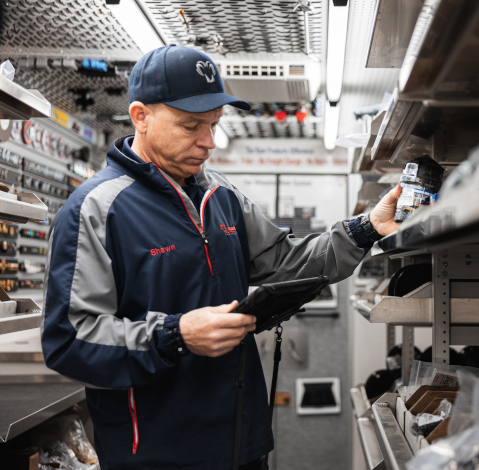

VMI Frequently Asked Questions
How often will a Ram Products Field Service Representative come by to service my bins?
Typically, our Field Service Representatives service bins once a week, bi-weekly, or monthly depending on product usage. We will work with each customer to establish a specific day of the week that works best for you.
Do I have to sign a Service Agreement?
No Service Agreement is required; however, you receive some amazing benefits if you do such as free storage bins, VMI service, and product training just to name a few.
Do I have to install and label my Ram storage bins?
You can if you want but we would prefer to handle all the details of your bin installation and organization as part of our Vendor Managed Inventory Service (VMI).







